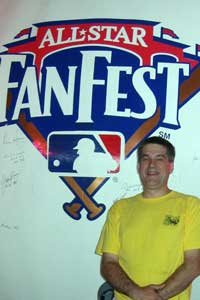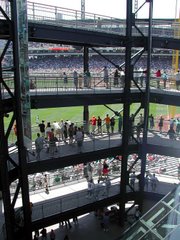Every time a pitcher throws a no-hitter, the discussion prior to his next start inevitably turns to Johnny Vander Meer.
Pitching for the Cincinnati Reds in June 1938, Vander Meer pitched no-hitters in consecutive outings against the Boston Bees (as the Braves then were called) and Brooklyn Dodgers, a feat that remains unique in major-league history.
Today, Detroit's Justin Verlander will pitch in Philadelphia going for his second straight no-hitter, following his 12-strikeout masterpiece vs. Milwaukee. Verlander will have to contend with a lineup that includes Ryan Howard, last year's National League MVP, along with heavy-hitting infielders Chase Utley and Jimmy Rollins, and rejuvenated outfielder Aaron Rowand.
Good luck to Justin, but the odds certainly are against him.
Now that Vander Meer's accomplishment has stood alone for 69 years, let's take a look at the game that wrote him into the record books.
The lead sentence in legendary sportswriter Roscoe McGowen's recap for The New York Times explains one factor in The Dutch Master's favor: "Last night they turned on the greatest existing battery of baseball lights at Ebbets Field for the inaugural night major league game in the metropolitan area."
The term "greatest existing battery of baseball lights" is relative, and in 1938 it probably amounted to not much more than the illumination for a high-school stadium nowadays. At any rate, major leaguers had been playing night baseball for only three years prior to '38, and Cincinnati's Crosley Field happened to be the first place where lights were installed.
The night game was a big event in Brooklyn, and a reported crowd of 40,000 jammed into Ebbets for the novelty of it all. The home team was down 4-0 by the third inning, but with Vander Meer continuing to put up zeroes, most of the fans probably stayed in their seats. It was 6-0 going into the bottom of the ninth, and as McGowen wrote:
"More drama was crowded into the final inning than a baseball crowd has felt in many a moon. Until that frame only one Dodger had got as far as second base, Lavagetto reaching there when Johnny issued passes to Cookie and Dolf Camilli in the seventh."
He developed a wild streak again in the ninth, walking the bases loaded with one out.
"All nerves were taut as Vandy pitched to Ernie Koy," McGowen wrote. "With the count one and one, Ernie sent a bounder to (Reds third baseman) Lew Riggs, who was so careful in making the throw to (catcher) Ernie Lombardi that a double play wasn't possible.
"Leo Durocher, so many times a hitter in the pinches, was the last hurdle for Vander Meer, and the crowd groaned as he swung viciously to line a foul high into the right-field stands. But a moment later Leo swung again, the ball arched lazily toward short center field and Harry Craft camped under it for the put-out that brought the unique distinction to the young hurler."
Vander Meer was 23 at the time and went on to have a decent career, if otherwise unspectacular. He was injured for much of the Reds' pennant-winning seasons in 1939 and '40, but came back to lead the NL in strikeouts for three consecutive years, 1941-43. He died in 1997 at age 82.
At the time of his double no-hitters, McGowen predicted "baseball history that probably never will be duplicated."
Let's see if Justin Verlander has something to say about that.
Subscribe to:
Post Comments (Atom)









No comments:
Post a Comment